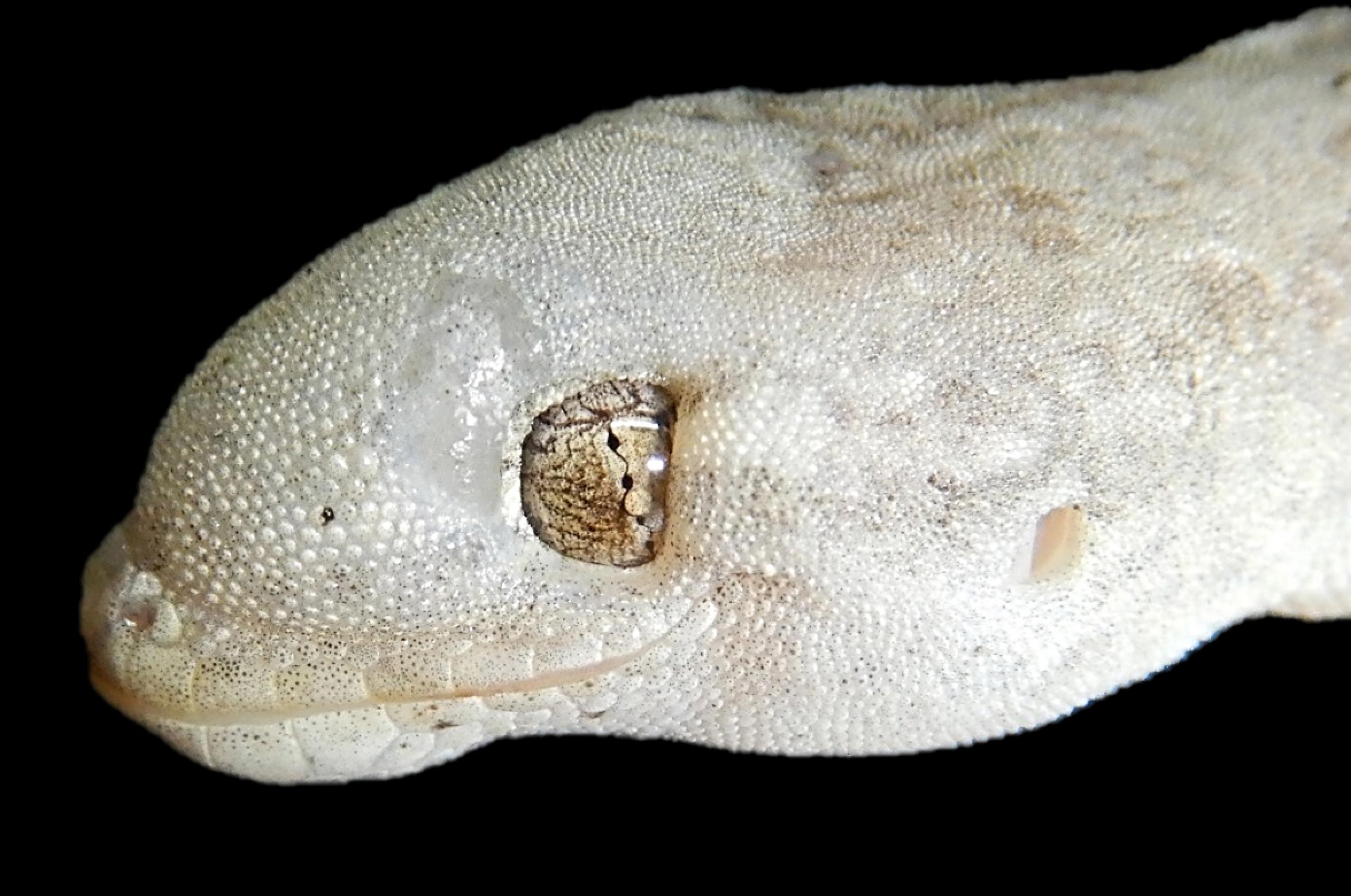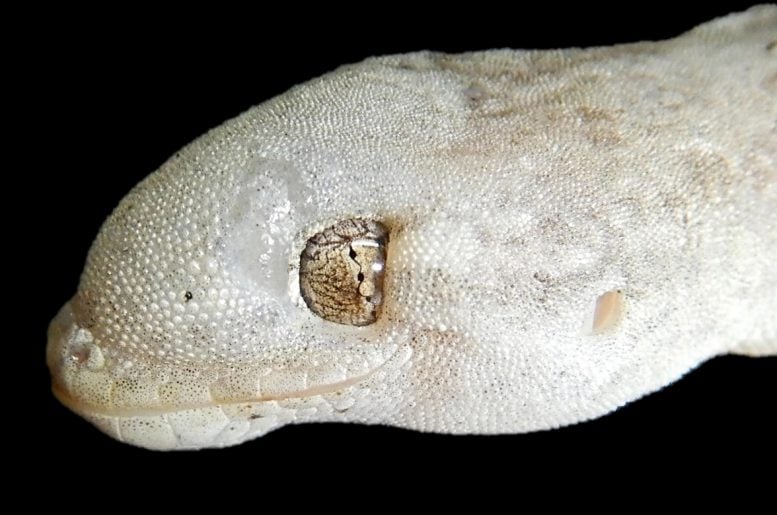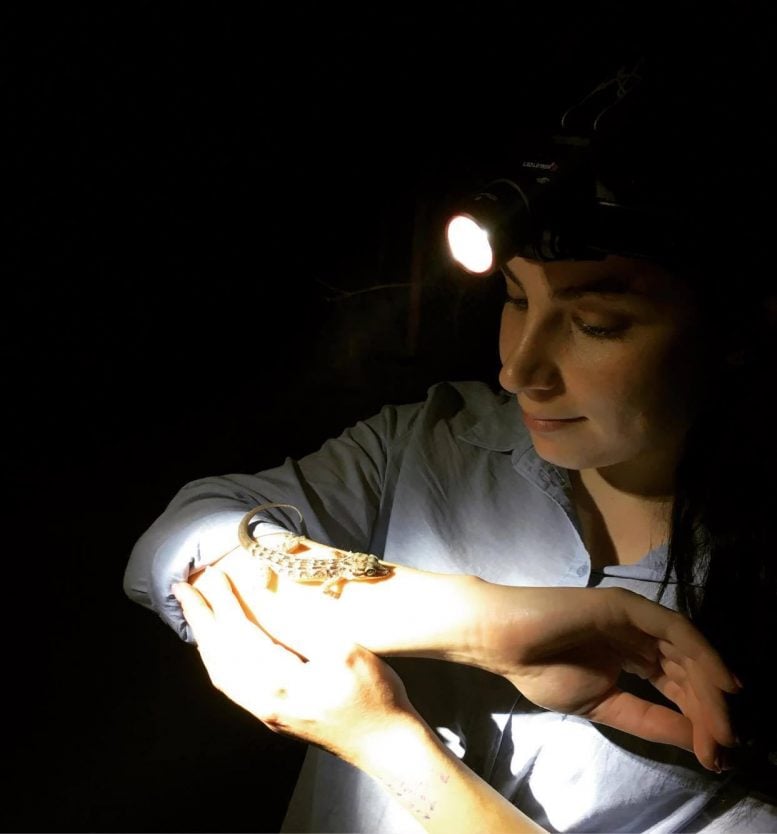
[ad_1]

One of Australia’s critically endangered native lizard species: the Lister’s gecko. Credit: Parks Australia
Bacteria responsible for the death of critically endangered species.
With wild populations decimated, the Lister’s gecko and blue-tailed skink only exist in captivity. Researchers at the University of Sydney have discovered a bacteria, which could cause their potential extinction.
The native Christmas Island reptile populations have experienced a severe decline with two species, the Lister’s gecko and the blue-tailed skink, disappearing entirely from the wild. While previously the main driver of this decline was likely predation by invasive species and habitat destruction, a silent killer now threatens to destroy the species completely.
Those captive-bred in Australia’s Indian Ocean territory are also mysteriously dying, leaving the two species – of which there are only around 1,000 each – in danger of extinction. Veterinary scientists from the University of Sydney, the Australian Registry of Wildlife Health and the Taronga Conservation Society Australia have now discovered the cause of these deaths: a bacteria, Enterococcus lacertideformus (E. lacertideformus).

Infected gecko with severe swelling of the head and face associated with Enterococcus lacertideformus infection. Credit: Jessica Agius
The bacteria was discovered in 2014 after captive reptiles presented with facial deformities and lethargy, and some even died. Samples were collected and analyzed by microscopy and genetic testing. The researchers’ results, published in Frontiers in microbiology, will inform reptile antibiotic testing to see if the infection can be treated.
The bacteria grow in the animal’s head, then in its internal organs, before finally causing death. It can be spread by direct contact – including through the mouths of reptiles or by reptiles biting each other – often during breeding season fights.
“This means that healthy captive animals should be kept separate from infected animals and should also be kept away from areas where infected animals have been,” said Jessica Agius, co-principal investigator and doctoral student at Sydney School of Veterinary Science.

Doctoral researcher Jessica Agius sheds light on critically endangered lizards on the Christmas Island grounds to find out if they are infected with Enterococcus lacertideformus. Credit: Jessica Agius
Ms. Agius and the research team not only identified the bacteria, but they decoded its genetic structure using whole genome sequencing.
Specific genes have been identified that may be associated with the bacteria’s ability to infect its host, invade its tissues and bypass the immune system.
“We have also found that the bacteria can surround themselves with a biofilm – a ‘community of bacteria’ that can help it survive,” Ms. Agius said.
“Understand how E lacertideformus producing and maintaining biofilm can provide information on how to treat other species of biofilm-forming bacteria. “
Research into the genetic code suggested that the killer bacteria were sensitive to most antibiotics.
Prof David Phalen, co-director of research and thesis director of Ms Agius, said: “This suggests that infected animals could be treated successfully. This is what we need to determine now. “
In another effort to protect endangered reptiles on Christmas Island, a population of blue tailed skinks has been established on the Cocos Islands. Ms. Agius was instrumental in the translocation, testing reptiles on the Cocos Islands to ensure they were free of E lacertideformus.
“It is essential that we act now to ensure the survival of these native reptiles,” Ms. Agius said.
Reference: “Regomic Insights into the Pathogenicity of a Novel Biofilm-Forming Enterococcus sp. Bacteria (Enterococcus lacertideformus) Identified in reptiles ”by
Jessica Esther Agius, David Norton Phalen, Karrie Rose and John-Sebastian Eden, March 2, 2021, Frontiers in microbiology.
DOI: 10.3389 / fmicb.2021.635208
Statement: The authors thank the Westmead Institute for Medical Research, the Sydney School of Veterinary Science – University of Sydney, the Australian Registry of Wildlife Health – Taronga Conservation Society Australia and Christmas Island National Park – Parks Australia for their logistical and financial support.
[ad_2]
Source link